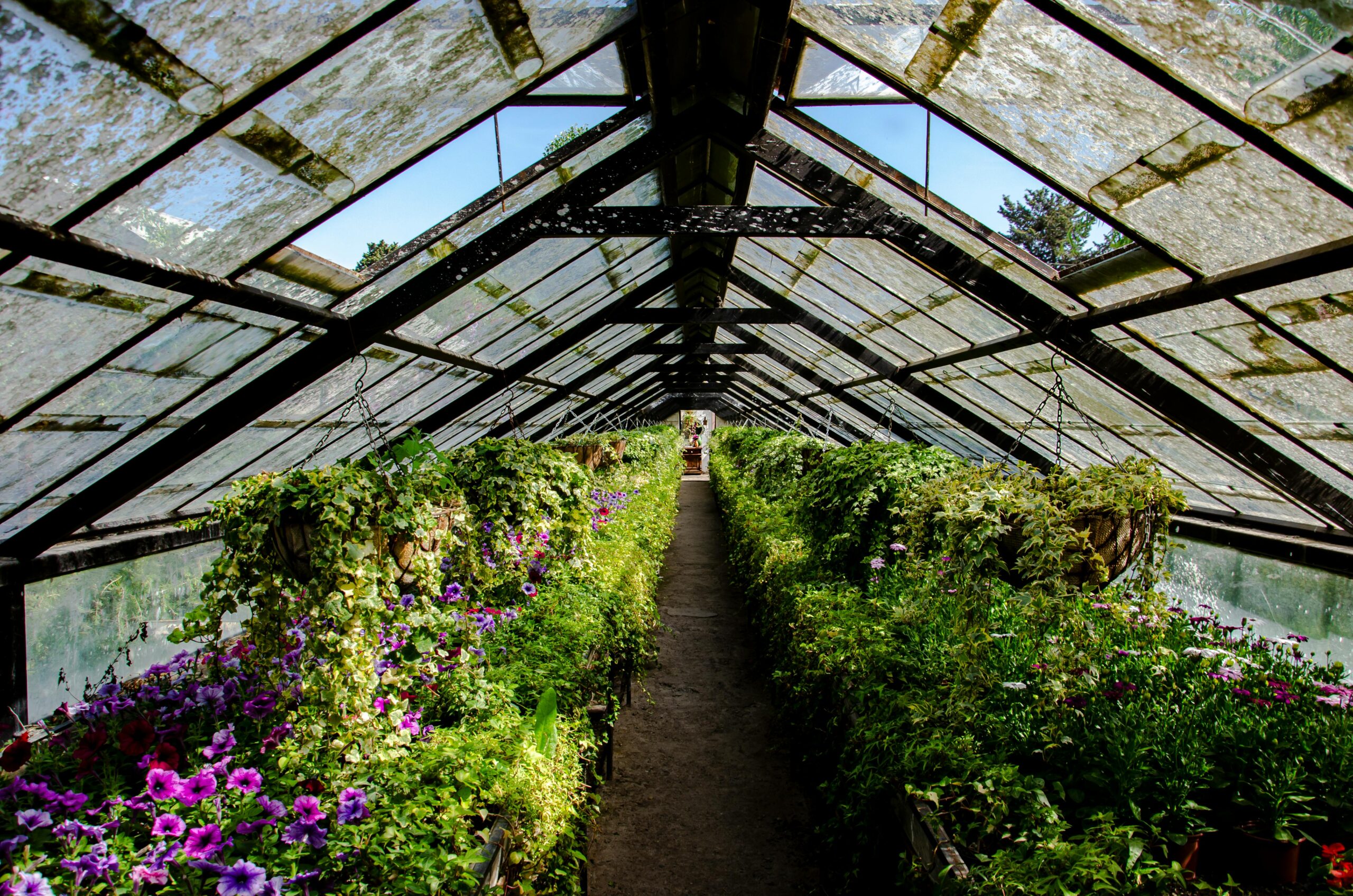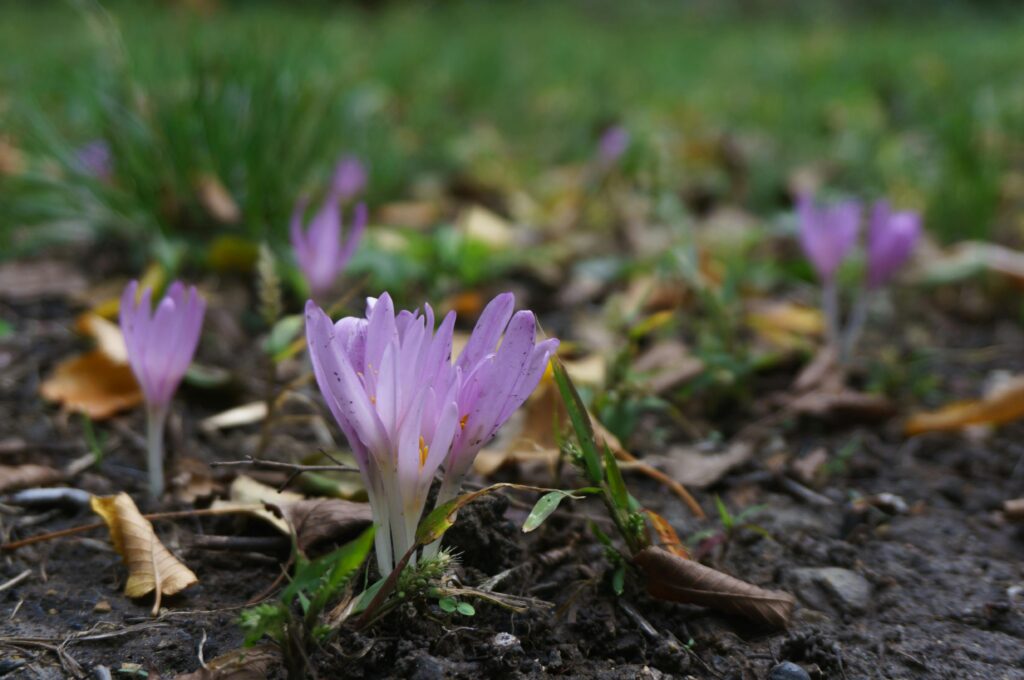
Imagine stepping outside on a crisp autumn morning, the air tinged with the promise of winter, and seeing your garden transformed into a masterpiece of stone and structure that not only withstands the harsh cold but flourishes in it. This is the magic of seasonal hardscaping , a design philosophy that embraces the changing seasons and uses durable materials to create outdoor spaces that remain stunning year-round, especially through the cold months.
Seasonal hardscaping is more than just arranging stones or building patios; it’s about crafting landscapes that tell a story through time, weather, and nature’s cycles. As temperatures drop and leaves fall, many garden features lose their charm or suffer damage, but seasonal stone and hardscaping techniques ensure your outdoor areas stay resilient and attractive despite the challenges that winter brings.
In this article, you’ll discover how to master seasonal hardscaping to enhance your property’s beauty and functionality as the seasons change. We’ll explore why choosing the right materials, such as frost-resistant stone and sustainable pavers, is crucial for durability. You’ll also learn practical tips on installation and maintenance that protect your investment from freeze-thaw cycles and snow. Ultimately, you’ll understand how to design hardscaping elements that complement the winter landscape, turning your yard into an inviting retreat even on the coldest days.
Whether you’re a homeowner looking to upgrade your outdoor space or a landscaping professional aiming to improve your seasonal designs, understanding seasonal hardscaping can help you create landscapes that thrive throughout the year. Join me as we delve into the art and science of blending durability with seasonal beauty, ensuring that your stone and hardscaping features continue to impress no matter the weather.
Why Seasonal Hardscaping is More Important Than You Think
When we talk about landscaping, many people envision lush green lawns, blooming flowers, and vibrant garden beds. However, there’s a growing trend that’s taking outdoor spaces to a new level of functionality and beauty year-round: seasonal hardscaping. This approach focuses on integrating durable, weather-resistant materials like stone, brick, and concrete into your landscape design to maintain structural integrity and aesthetic appeal even through the harshest cold months.
So, what exactly is seasonal hardscaping? At its core, it’s the art and science of designing and installing outdoor features, patios, walkways, retaining walls, fire pits, and more, that can withstand not only the rigors of everyday use but also the challenges posed by seasonal changes, such as freezing temperatures, snow, and ice. Unlike traditional landscaping elements that may wilt or decay come winter, seasonal hardscaping ensures your outdoor space remains practical and visually appealing no matter the season.
Why is seasonal hardscaping so important? Consider this: according to a 2023 national survey by the American Society of Landscape Architects, nearly 65% of homeowners want outdoor spaces that they can enjoy year-round. Moreover, hardscape installation projects have risen by 20% in cold-climate regions over the past five years, indicating a clear shift in homeowner priorities toward durable, low-maintenance solutions that extend outdoor living beyond summer.
Take, for example, the story of the Johnson family from Minnesota. Faced with brutal winters and short growing seasons, they wanted a backyard that would offer comfort and usability throughout the year. By investing in seasonal hardscaping, installing a stone patio with heated walkways, sturdy retaining walls, and a fire pit surrounded by frost-resistant seating, they transformed their backyard into a haven. Even in January, when temperatures dip well below freezing, the Johnsons host family gatherings and enjoy cozy evenings outdoors, proving that seasonal hardscaping isn’t just about durability; it’s about enhancing lifestyle and connection all year long.
Furthermore, the benefits go beyond usability and aesthetics. Properly designed seasonal hardscaping can improve property value by up to 15%, according to real estate experts, and reduce maintenance costs over time, as these materials resist damage from freeze-thaw cycles and require less frequent repairs compared to softer landscaping elements.
In essence, seasonal hardscaping bridges the gap between natural beauty and engineered resilience. It empowers homeowners to fully embrace their outdoor environments, crafting spaces that celebrate every season’s unique charm while standing strong against nature’s toughest tests. For anyone seeking durability blended with timeless beauty throughout the cold months, understanding and investing in seasonal hardscaping is not just smart, it’s transformative.
How to Master Seasonal Hardscaping Step by Step: Creating Durable Beauty Through the Cold Months
Seasonal hardscaping is more than just a design choice, it’s a strategic approach that embraces the changing seasons to enhance your outdoor space’s functionality and beauty year-round. When done correctly, seasonal stone and hardscaping projects can withstand the harshest cold months while adding durability and aesthetic appeal. Below, we’ll walk you through a detailed, step-by-step guide on how to apply seasonal hardscaping effectively.
1. Assess Your Climate and Site Conditions
The foundation of successful seasonal hardscaping lies in understanding your local climate, especially how cold and long the winter months can be.
– Identify Freeze-Thaw Cycles: Regions with frequent freeze-thaw cycles demand materials and construction techniques that prevent cracking or shifting.
– Soil Evaluation: Analyze soil drainage and stability. Poor drainage can cause water to freeze and expand under surfaces, damaging hardscaping.
– Sunlight and Wind Exposure: Recognize areas that face icy winds or little sunlight to plan for protective features or durable materials.
Example: In northern climates with heavy snow, using permeable pavers can reduce ice buildup and enhance safety.
2. Choose the Right Materials for Durability
Not all stones and hardscaping materials react well to the cold. Selecting materials adapted to seasonal changes will ensure longevity.
– Natural Stone Options: Granite, bluestone, and slate are excellent choices due to their density and resistance to frost damage.
– Concrete Alternatives: Use air-entrained concrete which contains tiny air pockets that help relieve frost pressure.
– Sealants and Finishes: Applying weather-resistant sealants can protect porous stones from moisture absorption.
3. Design for Seasonal Functionality and Aesthetic
Successful seasonal hardscaping offers both utility and beauty, accomplishing specific functions that cater to winter needs.
– Incorporate Heated Elements: Heated patios or walkways can melt snow and ice, improving safety.
– Add Windbreak Features: Stone walls or pergolas can serve as visual and physical shields against cold winds.
– Plan for Seasonal Plant Integration: Incorporate hardscape elements that frame evergreen plants or winter blooms for year-round landscape appeal.
Visual Aid: A diagram illustrating the placement of a heated stone walkway alongside windbreak stone walls shows how hardscaping integrates into winter landscape functionality.
4. Prepare the Site with Proper Drainage and Sub-base Installation
Good groundwork is critical to prevent damage from moisture and freezing.
– Install a Gravel Base: A well-graded gravel base facilitates drainage, preventing water accumulation.
– Slope Consideration: Ensure surfaces have a slight slope to direct water away from structures.
– Use Geotextile Fabric: This prevents soil movement and enhances stability beneath hardscapes.
5. Lay Stones and Build Structures with Winter Resilience in Mind
The installation phase is crucial to achieving durable seasonal hardscaping.
– Use Flexible Joints: Polymeric sand or flexible sealants in joints can accommodate expansion and contraction.
– Interlock Pavers: Choose interlocking systems that reduce shifting due to freeze-thaw pressures.
– Reinforced Walls: For retaining walls, use proper reinforcement and drainage weep holes to avoid frost heaving.
6. Apply Finishing Touches and Protective Treatments
Once your seasonal hardscaping is complete, add treatments that will preserve its integrity through the cold months.
– Seal Stone Surfaces: Use a penetrating stone sealer before the first frost to guard against moisture.
– Install Protective Covers: Temporary covers for sensitive stonework can prevent ice damage on exposed surfaces.
– Regular Cleaning: Remove snow with plastic shovels and avoid harsh chemicals that might erode stone or cement.
7. Maintenance Routine During Winter
Maintaining seasonal hardscaping during the cold months extends its life and keeps your space inviting.
– Snow and Ice Management: Regularly clear snow with care to avoid chipping or scratching surfaces.
– Inspect for Damage: Periodically check for cracks, loose stones, or shifting and make prompt repairs.
– Avoid Salt Overuse: If using deicers, select stone-safe products to minimize surface degradation.
Summary Table: Seasonal Hardscaping Step-by-Step
| Step | Key Considerations | Outcome |
| Climate & Site Assessment | Freeze-thaw, drainage, sun/wind | Informed design tailored to environment |
| Material Selection | Frost-resistant stones, sealants | Enhanced durability and weather defense |
| Design Planning | Heated elements, windbreaks, plants | Functional, beautiful winter landscapes |
| Site Preparation | Drainage base, slope, soil fabric | Stable, frost-resistant foundation |
| Installation | Flexible joints, interlocking pavers | Long-lasting, crack-resistant surfaces |
| Protective Treatments | Sealants, covers, careful cleaning | Maintained appearance and structure |
| Winter Maintenance | Snow removal, inspection, safe deicers| Extended lifespan and continued safety |
By carefully following these steps, you ensure that your seasonal hardscaping not only survives the cold months but thrives, enhancing your property with beauty and resilience. Seasonal stone & hardscaping, when applied thoughtfully, is an investment in durability and aesthetic appeal, one that pays off year after year with minimal upkeep and maximum outdoor enjoyment.
Tips for Seasonal Hardscaping: Creating Durable Beauty Through the Cold Months
✅ Plan with seasonal changes in mind: Choose materials like natural stone or concrete pavers that can withstand freeze-thaw cycles without cracking or shifting.
✅ Use proper drainage solutions: Ensure your hardscape has adequate slope and drainage channels to prevent water pooling and ice formation during winter.
✅ Seal stone surfaces before winter: Applying a high-quality sealant helps protect against moisture penetration and salt damage, preserving the stone’s look and durability.
✅ Incorporate frost-resistant materials: Select stones and gravel known for their frost resistance to reduce the risk of damage during cold snaps.
✅ Avoid metal edging that contracts and expands: Use flexible polymer or composite edging to accommodate ground movement caused by temperature changes.
✅ Plan for snow removal: Design flat, stable walkways and patios that can be easily cleared of snow without damaging the surface.
✅ Mulch surrounding beds in fall: Protect adjacent landscaping by applying mulch which helps moderate soil temperature and prevent frost heaving near your hardscape.
✅ Schedule repairs before winter hits: Fix any cracks or loose stones in early fall to prevent exacerbated damage caused by freezing water infiltration.
💡 Extra tip: Incorporate warm-toned stones or lighting elements to create a cozy atmosphere during the chilly months while highlighting your durable workmanship.

Key Concepts
To truly appreciate the art and science behind seasonal hardscaping, especially the integration of stone and other durable materials through the colder months, it is essential to unravel the underlying principles that govern its effectiveness and lasting appeal. Seasonal hardscaping is much like crafting a timeless sculpture that must not only withstand but also harmonize with the harsh and oft-unforgiving choreography of winter’s elements.
The Symbiosis of Durability and Aesthetic
At the core of seasonal hardscaping lies the delicate balance between strength and beauty. Stone, as a natural material, carries a legacy of endurance, millennia-old structures around the world attest to its resilience. However, its true mastery in modern landscapes emerges when such materials are selected and placed with foresight into seasonal stresses: freeze-thaw cycles, snow load, moisture infiltration, and ice abrasion.
Imagine a finely woven tapestry that, when exposed to seasonal change, does not unravel but instead reveals new depths of texture and contrast. This interplay is the essence of designing hardscape elements that not only resist physical deterioration but also evolve visually, gaining character as frost etches temporary marks and snow drapes a soft veil.
Thermal Movement: Nature’s Invisible Sculptor
One of the most critical concepts in seasonal stone and hardscaping is thermal movement. As temperatures shift from warm days to freezing nights, stone and paver materials expand and contract. This subtle breathing can be likened to the pulse of a living organism, imperceptible yet vital.
If unaccounted for, this movement can fracture or dislodge materials, much like the cracking of ancient ground under pressure. Thoughtful design introduces joints, flexible materials, or layout patterns that absorb this kinetic energy, ensuring the hardscape’s integrity over time. Thus, seasonal hardscaping becomes a dialogue, a negotiation between human craftsmanship and natural cycles.
Freeze-Thaw Cycles: The Test of Time
Seasonal hardscaping dances with one of the most stringent environmental tests: the freeze-thaw cycle. Water trapped in porous stone or soil freezes, expanding and generating internal pressures. When thawed, it recedes but leaves the material vulnerable to repeated stresses.
Envision a glass vase filled with water frozen overnight, each expansion creates microfractures that eventually lead to breakage. Similarly, hardscape designers select stones with low porosity and materials treated to minimize water absorption, transforming the hardscape into a fortress against winter’s subzero siege.
The Role of Texture and Color in Winter Landscapes
Winter landscapes often feel monochromatic, blankets of snow and muted skies dominate. Seasonal hardscaping, with its rugged stone and varied textures, acts as both contrast and complement. The rough surfaces catch frosty crystals and glisten under slanting sunlight, adding a dimension of tactile beauty that softens the barrenness of winter.
Color, too, plays a strategic role. Deep charcoals and earthy browns anchor spaces in warmth, while lighter tones reflect light and can brighten shadowed corners under snow cover. This thoughtful selection turns hardscaping from mere functional infrastructure into a seasonal storyteller, narrating the visual poetry of endurance and transformation.
Integration with Seasonal Plantings and Environment
Though stone and hardscaping are inherently “hard,” their seasonal relevance is amplified through subtle interactions with their living surroundings. Consider a stone retaining wall whose crevices shelter evergreens dusted with snow, or a hardscape pathway whose edges soften with winter-blooming shrubs.
This synergy mirrors a musical ensemble where each instrument maintains its voice yet enhances the harmony of the whole. Seasonal hardscaping accommodates the rhythms of growth, dormancy, and eventual renewal, thus embedding durability within an ecosystem that also thrives on seasonal change.
Emotional and Psychological Anchors
Beyond the physical, seasonal hardscaping intersects deeply with human experience. In the cold months, outdoor spaces offer refuge, continuity, and aesthetic uplift. The solidity of stone underfoot or the sturdy presence of a stone bench in a frosted garden provides a sense of permanence amid the ephemeral.
Analogous to a well-loved book or a family heirloom, the hardscape conveys stories and memories, inviting us to pause and connect during seasons often associated with retreat. This emotional resonance is a vital dimension of designing landscapes that endure not only physically but also culturally and psychologically.
Sustainability and Resilience in Winter Environments
Modern perspectives on seasonal hardscaping increasingly emphasize sustainability, choosing materials and construction methods that support environmental stewardship. Durable stone reduces the need for frequent replacements, cutting down on waste and resource consumption.
Moreover, hardscape design can influence microclimates by managing snow accumulation and meltwater, which in turn protect plantings and reduce erosion. This holistic view reframes seasonal hardscaping from a static backdrop into a dynamic participant in landscape resilience, quietly supporting the cycles of nature through the harshest months.
In summary, seasonal hardscaping reveals itself as an intricate craft that weaves together the timeless qualities of stone, the subtle dynamics of winter weather, and the deeper human yearning for beauty and stability. It is much more than installing elements on the ground; it is shaping a narrative of endurance, rhythm, and transformation that unfolds each year as nature’s cold breath.
By contemplating these foundational concepts, durability married with aesthetic grace, thermal movement as a natural rhythm, resilience against freeze-thaw, the artistry of texture and color, integration with living environments, emotional anchoring, and sustainability, we gain richer insight into how seasonal stone and hardscaping create lasting beauty that transcends the winter’s chill.
Frequently Asked Questions about Seasonal Hardscaping
❓ What is seasonal hardscaping, and why is it important?
Seasonal hardscaping refers to designing and installing outdoor stone features and structures that withstand the challenges of different seasons, particularly the cold months. It’s important because well-planned hardscaping maintains its durability and aesthetic appeal through freeze-thaw cycles, snow, and ice, ensuring your outdoor space looks beautiful year-round.
❓ How does cold weather affect stone and hardscaping materials?
Cold weather, especially freezing and thawing cycles, can cause certain materials to crack or degrade over time. Moisture seeps into small pores or joints and expands when it freezes. Choosing the right stone and construction techniques specifically for seasonal hardscaping can prevent damage and prolong the life of your features.
❓ What types of stones are best suited for seasonal hardscaping?
Natural stones like granite, bluestone, and certain types of limestone are excellent for seasonal hardscaping because they resist freezing temperatures and are less porous. These durable materials maintain their strength and color despite harsh winter conditions, making them ideal for patios, walkways, and retaining walls.
❓ Can seasonal hardscaping enhance outdoor living during winter months?
Absolutely! Features like fire pits, stone fire tables, and covered seating areas created through seasonal hardscaping transform your outdoor space into a cozy retreat even in cold weather. Properly designed stone elements make the yard functional and inviting despite the chill.
❓ How should I maintain my seasonal hardscaping to ensure durability through winter?
Regular maintenance includes cleaning debris off stone surfaces before winter, sealing porous stones to prevent moisture absorption, and inspecting joints for cracks. Additionally, avoid using harsh chemicals or metal shovels that can chip or damage stones. Proper care enhances the longevity and beauty of your seasonal hardscaping.
